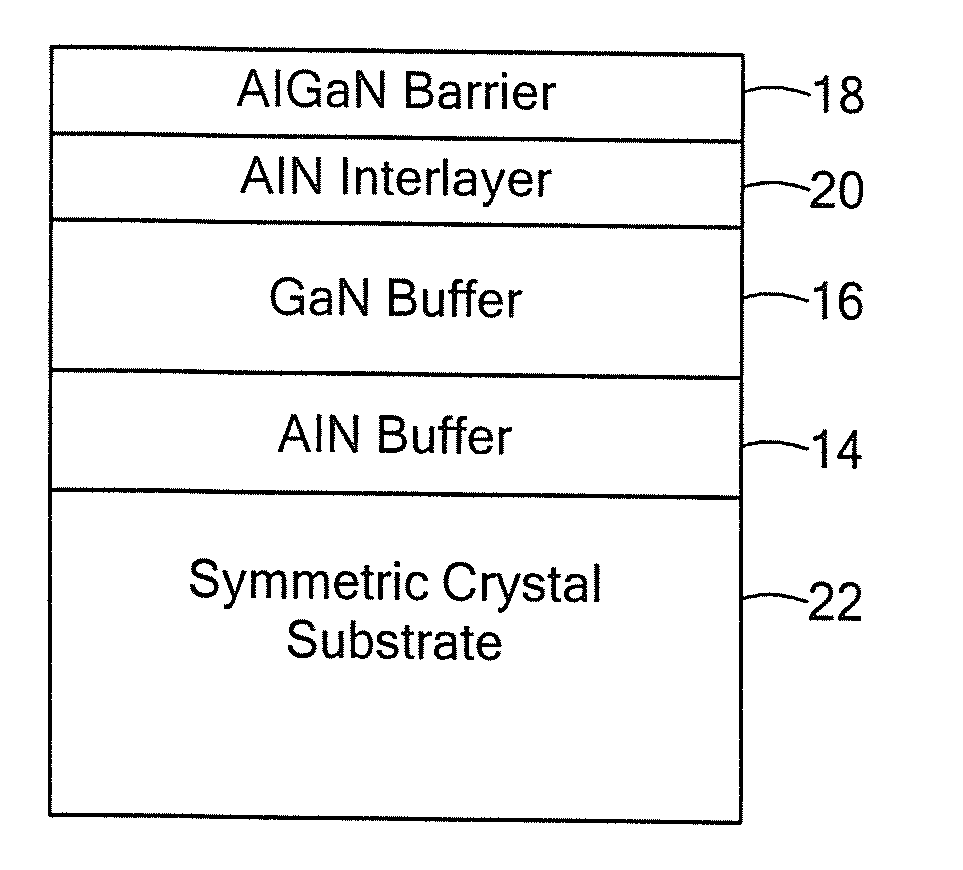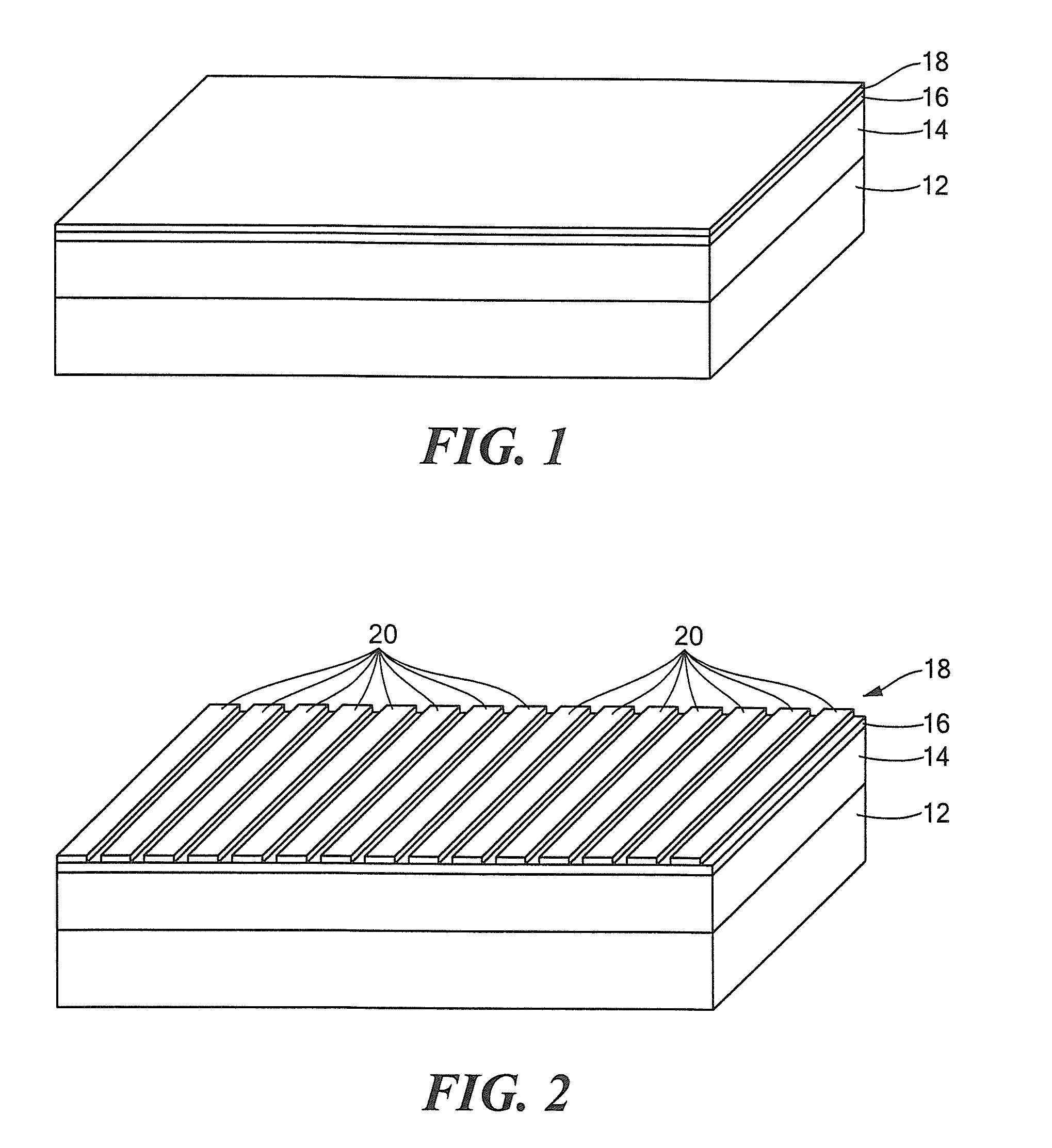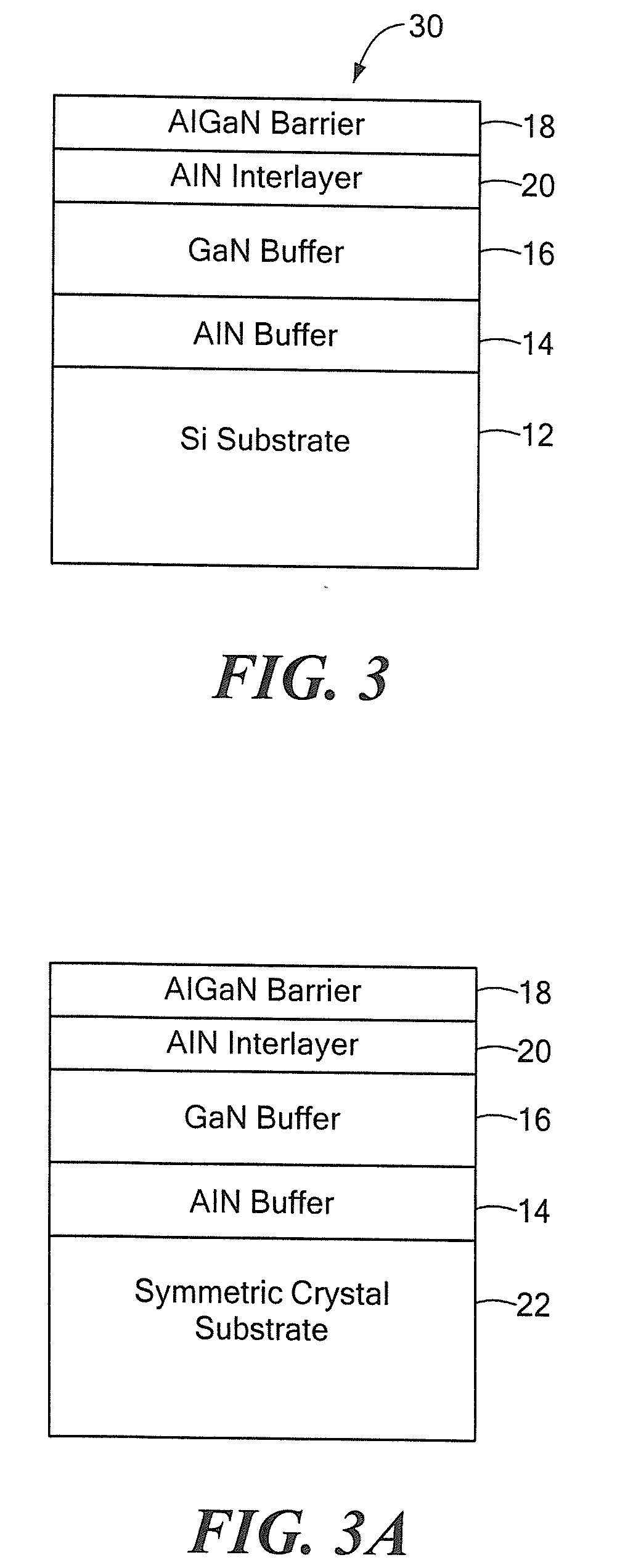Gallium nitride for liquid crystal electrodes
a liquid crystal electrode and gallium nitride technology, applied in the direction of semiconductor devices, instruments, electrical apparatus, etc., can solve the problems of increasing the optical absorption of a steered optical beam, inherently lossy conductive thin film semiconductors, and using substrates that exhibit birefringence, so as to achieve less free carrier absorption and high electron mobility
- Summary
- Abstract
- Description
- Claims
- Application Information
AI Technical Summary
Benefits of technology
Problems solved by technology
Method used
Image
Examples
Embodiment Construction
[0026]Referring now to FIG. 1 a transparent multi-electrode window using a gallium nitride (GaN) high electron mobility transistor (HEMT) structure includes a substrate 12 having an aluminum nitride (AlN) layer 14 disposed thereover with a semi-insulating gallium nitride (GaN) layer 16 disposed thereover. Substrate 12 may be provided from a number of materials, including but not limited to sapphire, SiC, Si, or Spinel. In one exemplary embodiment, GaN layer 16 is provided having a thickness typically in the range of about 1-3 microns (μm) and AlN layer 14 is provided having a thickness typically less than about 0.1 μm. In some applications, a thickness of 0.05 μm is preferred.
[0027]Disposed over the semi-insulating GaN layer 16 is a topmost AlN or AlxGa1-xN layer 18. In one embodiment, the topmost AlxGa1-xN layer 18 is provided having a thickness typically in the range of about 50-400 angstroms (Å) with about 200 Å being preferred in some applications.
[0028]Referring now to FIG. 2, ...
PUM
| Property | Measurement | Unit |
|---|---|---|
| thickness | aaaaa | aaaaa |
| thickness | aaaaa | aaaaa |
| thickness | aaaaa | aaaaa |
Abstract
Description
Claims
Application Information
 Login to View More
Login to View More - R&D
- Intellectual Property
- Life Sciences
- Materials
- Tech Scout
- Unparalleled Data Quality
- Higher Quality Content
- 60% Fewer Hallucinations
Browse by: Latest US Patents, China's latest patents, Technical Efficacy Thesaurus, Application Domain, Technology Topic, Popular Technical Reports.
© 2025 PatSnap. All rights reserved.Legal|Privacy policy|Modern Slavery Act Transparency Statement|Sitemap|About US| Contact US: help@patsnap.com



